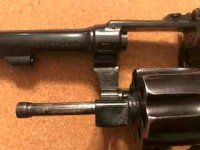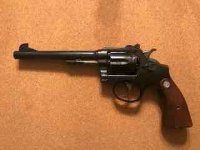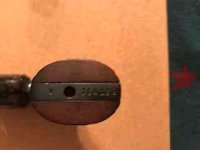I just purchased what the Firearms Registration people have determined to be a Hand Ejector 38 Military & Police Victory Model.
I would like to get more detailed info from those with more knowledge on this forum.
It is first of all a .22 revolver with a "V" prefix serial number; one line 'Made In USA' with a 4 screw side plate and the cylinder lock screw in front of trigger guard.
The hammer block is the older type (depressed into side plate during cocking).
BNP proofs on barrel, every chamber and a proof left side near front of trigger guard.
I believe probably dates to about 1941-42 but definitely pre 1944.
Any help on further identifying this gun and thoughts on value would be appreciated as I have found no info on Victory .22 Target Revolvers which is what this appears to be to my undereducated eye.
Will try to get pics reduced in size to add later; sorry.
Thanks
Bruce
I would like to get more detailed info from those with more knowledge on this forum.
It is first of all a .22 revolver with a "V" prefix serial number; one line 'Made In USA' with a 4 screw side plate and the cylinder lock screw in front of trigger guard.
The hammer block is the older type (depressed into side plate during cocking).
BNP proofs on barrel, every chamber and a proof left side near front of trigger guard.
I believe probably dates to about 1941-42 but definitely pre 1944.
Any help on further identifying this gun and thoughts on value would be appreciated as I have found no info on Victory .22 Target Revolvers which is what this appears to be to my undereducated eye.
Will try to get pics reduced in size to add later; sorry.
Thanks
Bruce
Attachments
Last edited:






